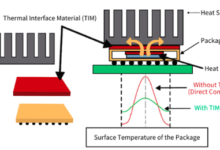Vibe Code Cleanup Specialists On Rise

DIY Vibe Coding has Limitations No One Entrepreneur Can Avoid.
Many startup founders use AI “vibe-coding” platforms (Lovable, Replit, etc.) to build early versions of their apps. You type a plain-language description of what you want, and the tool produces the code (and sometimes a runnable app) for you. This lets non-technical people with no programming experience create a working prototype quickly and at low cost.
It is widely known that about 25 percent of new startups now use AI for roughly 95 percent of their code. Google says that AI now writes more than 30 percent of its new code.
Why Entrepreneurs Are Opting to Vibe Code Their Projects
Faster Development
Jobs that used to take weeks can now be finished in a few days – about two to five times faster than with traditional approaches, in my experience. AI coding tools let startups build and launch a basic product very quickly – sometimes even from a single prompt. This helps them test ideas and reach users sooner.
Reduced Software Development Costs
Founders can build a prototype without hiring a team because AI coding tools take care of the routine code. This can significantly reduce further development costs. A project that once required 1,000 development hours can now be completed in 200. For a startup, that is a major saving.
Limitations of DIY Vibe Coding
DIY vibe coding tools make it easy to create a prototype, but the code they generate often is not ready for real-world use. Founders soon run into problems.
From the outside, you look very productive – one day’s work now leads to a week’s worth of code. However, LLM can write convincing code that contains flaws, and newcomers often miss them.
Poor Architecture & Maintainability
Founders use AI to deliver code as cheaply and quickly as possible, focusing only on immediate needs. They skip modular design, testing, and security checks, which leads to making the product suitable only for a demo. They build the app as a mix of functions, variables, and modules with no consistent conventions. This makes the code difficult to scale and expensive to maintain.
Without proper architecture – how components interact, how data flows between them, and what must change as complexity grows – the program may run but will require major rework to support more users, larger datasets, or additional features.
Security and Compliance Gaps
When you ask an AI tool to write code,you may not think to request checks on user input, password hashing, or access checks, so the AI may ignore it.
Tests show that, for example, asking an AI to build a login page with no extra details on security produces code that allows SQL injection. Builds created this way can violate compliance rules. A skilled developer sees such missing safeguards.
Performance and Scalability Issues
AI-written code can run slowly in daily use. Database queries may drag, and pages can carry extra weight. If no one tunes the program, many users signing in at once can break the app.
Lack of Testing and Polish
Small home-grown projects often lack thorough tests. A founder may assume that code from an AI will work, but rare cases, and error handling will be missing. Unit tests, docs, and helpful error text show up only when someone creates them. Without them, the program can break with little provocation.
Teams that code this way in-house often end up with shaky programs lacking solid structure or security checks. They then need experienced engineers to review, rewrite, and prepare the software for day-to-day use. The prototype may run, but it does not meet the standards of a safe, and efficient app, so founders bring in experts.
See also: Designing a Custom Canopy Tent That Turns Heads at Every Event
Rise of “Vibe Code” Cleanup Firms
After building the first version, many founders turn to senior programmers or specialist firms to tidy the code and get it ready for release. The gap between a quick draft and a polished product soon shows.
A new slice of agencies now focuses on fixing that. They take an AI-coded prototype and turn it into software that you can run in production: close security gaps, add tests, set up continuous integration and continuous delivery, and add monitoring and logging.
Companies are increasingly turning to specialized firms to rescue AI-generated codebases that lack proper architecture and security safeguards.
Teams that rushed to a demo with AI now need senior engineers to make the code stable, secure, and scalable. Investors and product leaders call these firms before launch to cut risk.
The Cleanup Process
After the initial do-it-yourself coding phase founders hire professionals to improve the codebase. Those professionals fix bugs, enforce a coherent software architecture, close security gaps, improve performance, and put in standard industry practices that were skipped earlier. They add missing tests and documentation, refactor fragile components, and stabilize behavior so the product can move toward production.
Startups bring half finished artificial intelligence coded projects with cheap and dirty code to vibe code cleanup specialists. They need to audit, refactor, and productionize the work.
Seasoned engineers start with a deep audit of the existing code. They identify weak spots: where the architecture is inconsistent, where security holes exist, and what needs refactoring. Often, a lot of code needs to be rewritten or reorganized. Senior developers go through the code line by line, apply necessary fixes, write missing tests, enforce a coherent design, and ensure the app meets quality standards for launch.
AI-Boosted Senior Developers Delivering Quality at Lower Cost
A key reason entrepreneurs seek out these AI-savvy development companies is also the cost. They want the expertise of senior developers, but at a price closer to what they might pay less-experienced coders. The good news for them is that the top cleanup firms have figured out how to dramatically boost senior developer productivity using AI, which in turn lowers the cost of their services.
By pairing experienced engineers with AI “co-pilot” tools and well-honed processes, these companies can do more with fewer billable hours – savings that get passed to the client.
How AI-Augmented Senior Development Teams Achieve Cost Reductions
Delegating Non-Critical but Heavy-Lift Coding Tasks to AI Assistants
Instead of a human spending days writing rote code (like writing tests, converting one data format to another, etc.), an AI model can generate most of that code in minutes. The senior engineer’s role then shifts to reviewing and refining the AI-generated code. Far fewer human hours are needed for a given scope of work.
AI has freed senior engineers to resolve higher-level issues ten times faster than before. By letting the AI handle the grunt work, a single senior developer can produce the output that might have taken several developers in the past.
Maintaining Quality Through Senior Oversight
These firms assign senior engineers to oversee each step of the AI-assisted development process. AI-generated code serves only as an initial draft. Every line is then tested, reviewed and refined by an expert before it becomes part of the final product.
This human oversight catches and corrects bugs, design flaws and security vulnerabilities in the AI code. As a result, clients receive reliable, well-built software more quickly and at lower cost.
Optimized Workflows and Tools
Specialist firms use defined internal methods for software work with AI. They begin with upfront design and specifications created by senior engineers so generated code fits the intended architecture. Code is produced module by module and tested continuously rather than delivered as one large batch. Teams refine the instructions sent to AI and use multiple AI systems when appropriate. Senior engineers integrate the modules, run end to end tests, and fix defects before any code is released.
Faster Delivery Times
AI speeds up coding and shortens project timelines, which lowers costs by cutting billed hours and getting products to market sooner. Reports show projects finishing in half or a third of the time of traditional development while maintaining strong quality.
For example, a project that once took six months and $200,000 can now be completed in two to three months at a much lower price.
Bridging AI Speed with Professional Quality
Vibe coding speeds development but does not remove the need for traditional software engineering. It often postpones that need until later. Founders use AI to produce early prototypes and then hand engineering tasks to experienced teams. Specialized cleanup firms combine AI output with senior oversight and step in to convert rough prototypes into stable products.
More companies recognize that their internal teams lack the experience to use AI coding effectively and choose to outsource that work. Vibe coding moved past the initial excitement and now requires conventional engineering to reach production.
Senior-level expertise has become more affordable to entrepreneurs than it used to be. Rather than paying for a full team of developers or an expensive months-long contract, a startup can engage a vibe code cleanup specialist firm that will use a handful of high-level engineers augmented by AI. The client pays for far fewer hours of human labor, yet gets equal or better results than the old way. Fewer billable hours are needed to deliver a given scope of work, so the total cost of ownership for clients plummets even as quality is maintained (and often improved). These AI-empowered teams are delivering more value faster, finishing projects in a fraction of the time and budget it once required.
Dzmitry Baraishuk
Chief Operating Officer at Belitsoft
Dzmitry Baraishuk is a partner and Chief Innovation Officer (CINO) at a custom software development company Belitsoft (a Noventiq company) with hundreds of successful projects for US- and UK-based startups and enterprises.






